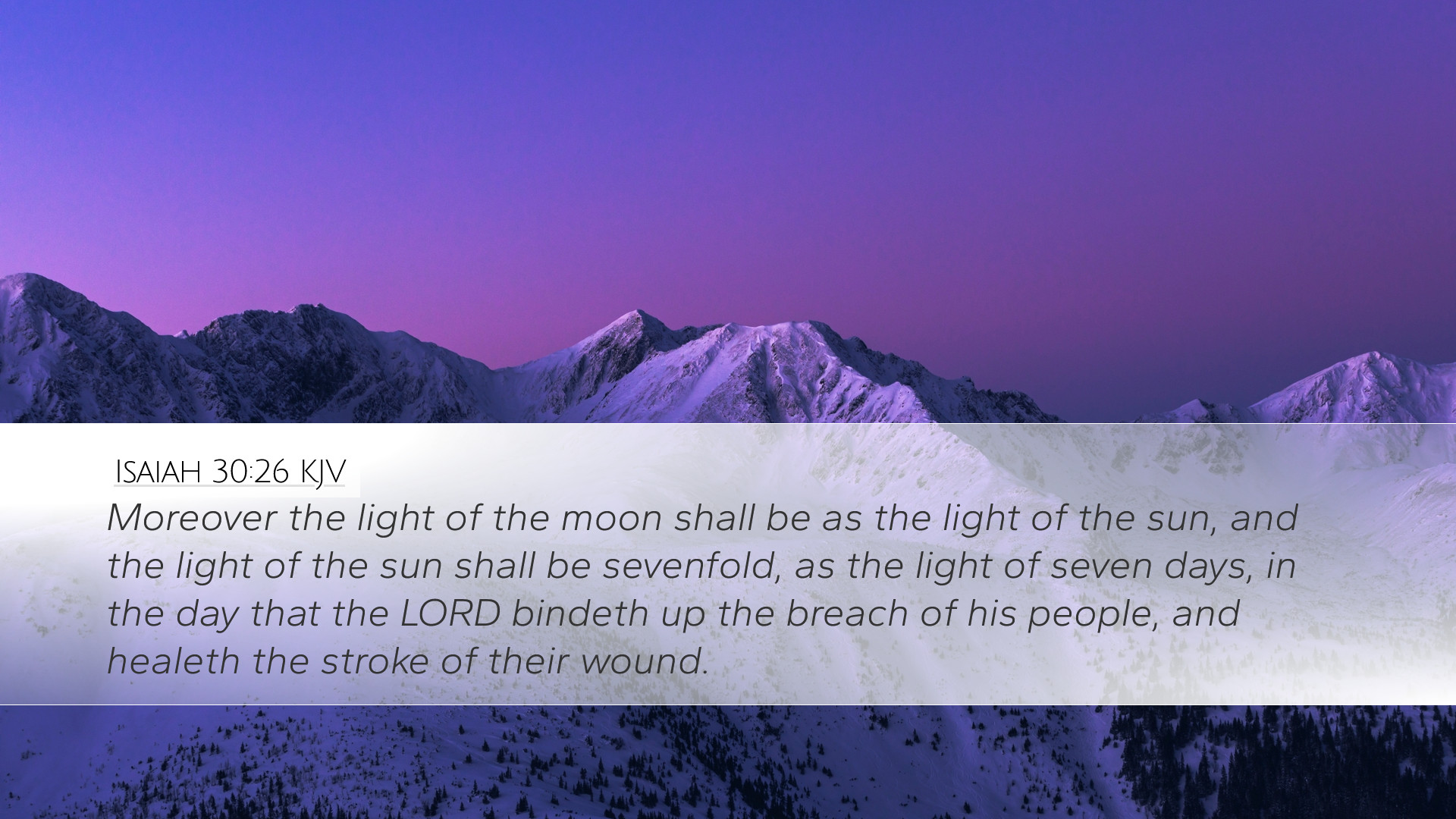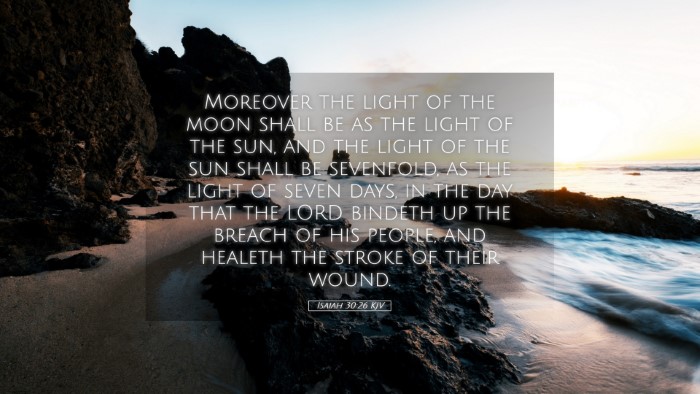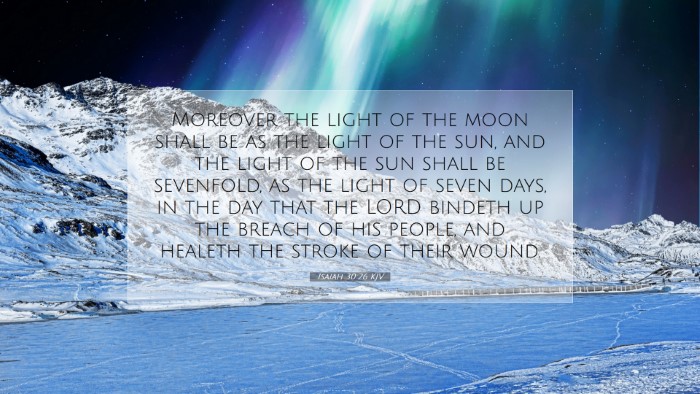Commentary on Isaiah 30:26
Isaiah 30:26 states, "Moreover the light of the moon shall be as the light of the sun, and the light of the sun shall be sevenfold, as the light of seven days, in the day that the LORD bindeth up the breach of his people, and healeth the stroke of their wound." This verse encapsulates a profound promise of restoration from God, portraying a vision of divine light and healing that holds rich theological significance.
Contextual Overview
The book of Isaiah is a prophetic text that addresses the socio-political landscape of Israel and Judah during a period of impending judgment and hope for restoration. This chapter specifically highlights the contrasting approaches of reliance on human wisdom versus divine guidance. The people of Judah had sought alliances with Egypt as a refuge from Assyrian aggression, reflecting a dependence on earthly security rather than on the LORD.
Theological Insights
- Light as Symbolism: The imagery of light in this verse carries significant weight. Traditionally, light is associated with purity, guidance, and the presence of God. Matthew Henry notes that the "light of the moon" achievable by divine intervention signifies a time of profound revelation and clarity for God's people.
- Sevenfold Light: The reference to the sun shining "sevenfold" underscores perfection and completeness in biblical numerology. Albert Barnes expounds that this amplification of light indicates a bountiful outpouring of God's blessing upon His people, symbolizing an age of enlightenment following their period of darkness.
- Restoration and Healing: The latter part of the verse speaks to the LORD's commitment to "bind up" and "heal" His people. Adam Clarke emphasizes that this healing pertains not just to physical ailments but extends to spiritual restoration. The wounds signify the consequences of sin and rebellion, and God is portrayed as a compassionate healer who addresses both the corporeal and the spiritual needs of His people.
Exegesis of Key Phrases
“The light of the moon shall be as the light of the sun…”
This phrase conveys an eschatological promise wherein even the lesser lights will reflect the glory of God, indicating an extraordinary future where God's presence will be universally recognized and felt among His people. This suggests a transformation of what is considered ordinary by elevating it through divine radiance.
“...the light of the sun shall be sevenfold...”
In this metaphor, the sun represents God's direct illumination and sovereignty. The amplification of this light to sevenfold suggests an intensity and abundance of divine blessings that surpass human expectations. The enhancement symbolizes a new creation or a restoration period, where God's glory is profoundly manifested in the lives of believers.
“...in the day that the LORD bindeth up the breach of his people…”
This phrase introduces the idea of God as a healer and restorer. The term "breach" points to divisions, whether societal or spiritual, that need healing. The promise is that God will repair what has been broken, reassuring those who have suffered that He is actively working for their restoration.
Practical Applications
The rich symbolism in Isaiah 30:26 calls pastors, theologians, and students to reflect on several practical applications:
- Trust in Divine Restoration: Believers ought to place their trust in God's ability to restore their lives, communities, and nations. Even amidst turmoil and distress, God’s promise of healing should instill hope and confidence.
- Embrace God’s Presence: The transformative power of God's light invites individuals to cultivate a closer relationship with Him, seeking His presence in everyday life, which dispels darkness and confusion.
- Encouragement to the Afflicted: This verse serves as a message of comfort to those who face hardships. The imagery of healing and light can provide solace to those who feel lost or broken, assuring them that God desires to heal their wounds.
- Call to Repentance: Understanding the context of this passage emphasizes the need for repentance prior to receiving healing. The call remains for individuals and communities to turn away from reliance on earthly powers and seek God's guidance fully.
Conclusion
Isaiah 30:26 serves as a beacon of hope, articulating a vision of healing and divine light. Drawing upon the insights of respected public domain commentaries, we see this verse invites deep theological reflection that can guide pastors and scholars in practical ministry. It ultimately reassures believers of God’s omnipotent desire to heal and restore.


